Coverlock: what is it and what is it for, how to choose?

As the level of skill increases, each seamstress thinks about expanding the arsenal of technical means available to her. And if a multifunctional sewing machine is not enough for solving problems, you have to purchase additional equipment: an overlock, a coverstitch machine or their hybrid version - a carpetlock. How to choose such a technique, what points should be taken into account, what the reviews of those who have already become the owner of such a machine promise - such questions arise among people who are keen on needlework, quite often.
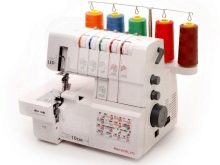
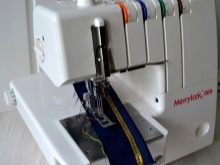
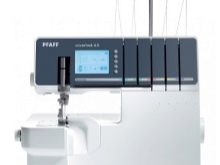
What it is?
The carpetlock is a universal sewing machine capable of stitching fabric, creating flat and overlock seams, chain decorative stitches. Using this technique, it is possible to ensure high-quality processing of the edges of the fabric, regardless of its composition, degree of density and elasticity. When machining, the excess stock is cut off, leaving a clean and even edge. The big advantage of the carpetlock is the ability to work with fabrics of different density, roughness, and combine materials of different characteristics without switching from machine to machine.
Most models provide computer control, but you can also find equipment with a conventional electromechanical drive and manual adjustment. The presence of a display is relevant only for electronic versions of carpetlocks - here you can control settings, use an electronic assistant.
In addition, among the additional options can be noted an expansion table that increases the area of the working surface, a place for installing an additional needle, a thread trimmer, a needle threader.
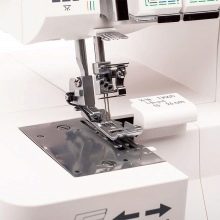
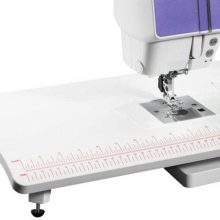
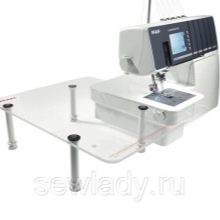
What is it needed for?
The main purpose of the carpetlock is to automate work processes integrated in one machine. With its help, it will not be possible to sew in a zigzag, herringbone pattern, the apparatus is deprived of the possibility of creating a variety of curly stitches. This technique is not suitable for sewing buttonholes. Carpet locks have a completely different purpose. They can grind parts with a chain double-thread seam - "pigtail", widely used in modern sewing industry. In addition, only this machine can formation of a stitch with a top covering - other types of equipment are not capable of this.
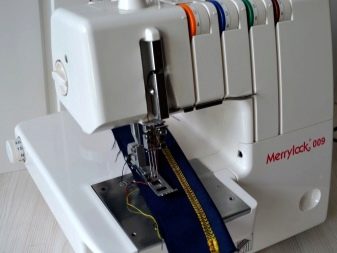

Differences from overlock and cover sewing machine
The variety of modern sewing equipment today can confuse a person who is not too experienced in sewing. It will be rather difficult to understand how cover-sewing machines and overlocks differ from a carpetlock without a detailed study of their features. To make a choice, you need to understand how important certain functions are in the work of a particular master.
- Overlock. This type of sewing machine belongs to the category of equipment used for processing edges, edges of the material. The fabric is overcast, if necessary, excess seams are cut off automatically. In this work, 2–5 threads are used, forming an overlock seam during weaving, which retains its elasticity when the materials are stretched.
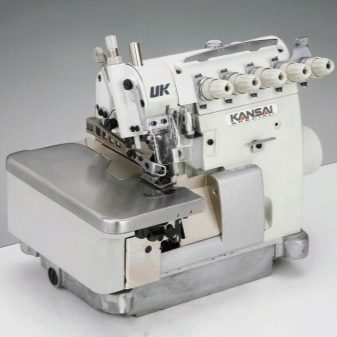
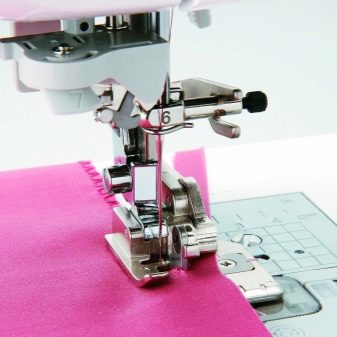
- Coverstitch machine. It is also called cover-up, it is used to create flat seams on the surface of knitwear, stretch and other elastic synthetic materials. Using this technique, you can easily form stitches not only along the edge, but also in any other part of the material or product. It is the cover-stitching machines that are used to create swimwear, sportswear, T-shirts, T-shirts, and other underwear jersey.
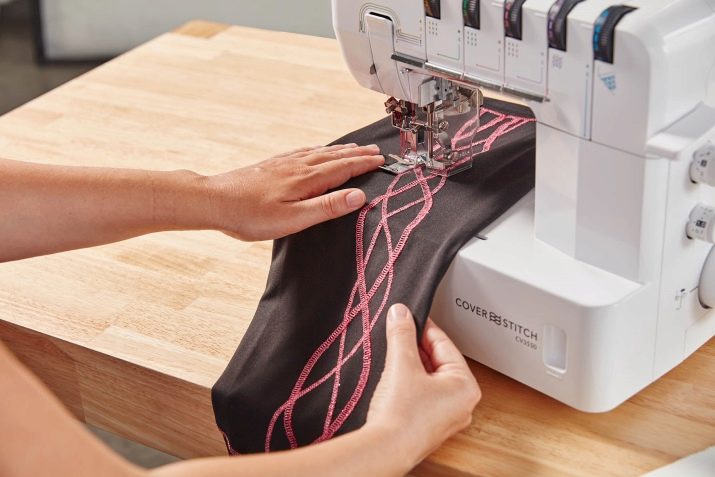
- Coverlock. A versatile technique capable of overcasting fabric edges and forming flat seams. These machines have a medium-sized sleeve overhang - shorter than that of cover-sewing machines. Some models use the included side table, which makes it easier to work with large items.

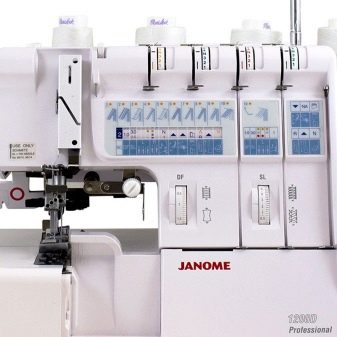
Apart from the differences, the carpetlocking machine, the overlocking machine and the cover sewing machine share a common feature. All of them are equipped with loopers, which make it possible to dispense with the bobbin when feeding the bobbin thread. It is fed straight from a large reel due to the high material consumption. The carpetlock uses 2 loopers at once, thanks to which it can form chain stitches and a variety of knitted stitches.

Model rating
Among the popular carpet lovers, you can choose models that consistently receive the most positive reviews. Several sales leaders are worth highlighting.
- Janome 1200D. This is a high-end and mid-range model. The coverlock performs 20 types of stitches, is equipped with a differential conveyor, and develops a sewing speed of up to 1300 sti / min. The model is electromechanical, it consumes 120 W during operation, it is equipped with a needle refill, a manual thread tension controller, and a cut-off knife.

- AstraLux Cover Pro 860. Inexpensive rug with compact size, interesting design, sewing speed up to 1200 sti / min. The model is electromechanical, it performs 20 operations, it is supplemented with a cover and a removable sleeve platform. There is a thread cutter, differential feed, adjustable foot pressure on the fabric.
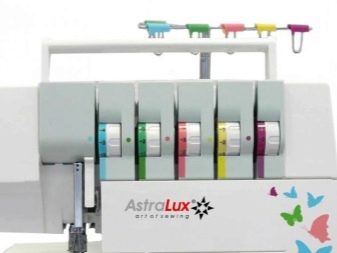

- Pfaff 4852. Not the cheapest rug with a wide range of functions, speed up to 1300 sti / min. The model is rather bulky and massive, equipped with a case. This coverlock is capable of performing 18 operations, it is equipped with a differential conveyor, looper refueling, and a puncture force stabilizer. This is a good solution for an experienced seamstress.
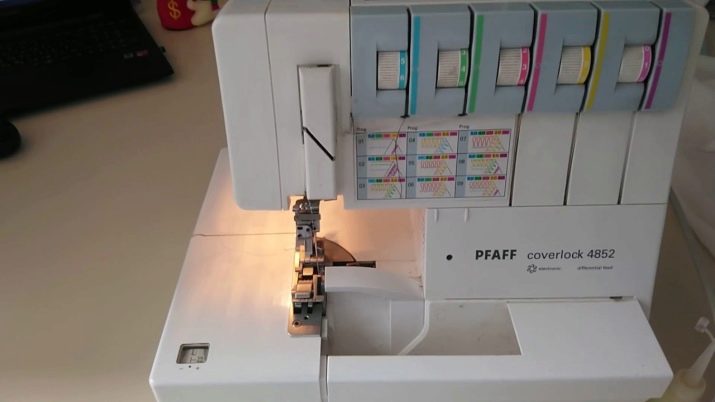
- AstraLux Cover Pro 888. Not the most expensive rug from a well-known budget brand. The model is not very powerful - only 120 W and 1200 sti / min, performs 20 different seams, is equipped with a minimum set of necessary options. This is a good choice if you plan to sew from time to time.

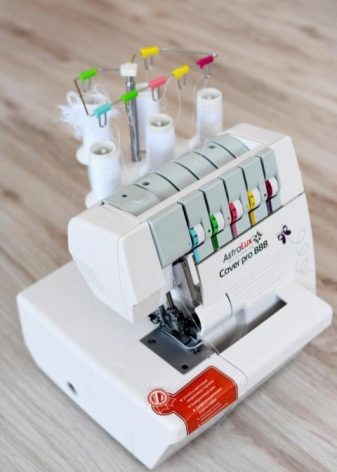
- BabyLock Evolution BLE8W-2. A coverlock supporting 2-4 strands. This is a professional-grade model with automatic change of thread tension, easy adjustment, pneumatic threading in the loopers, forms a stitch without fabric, securing its end.
The model is distinguished by extensive equipment, versatility, but its price is noticeably higher than the market average.
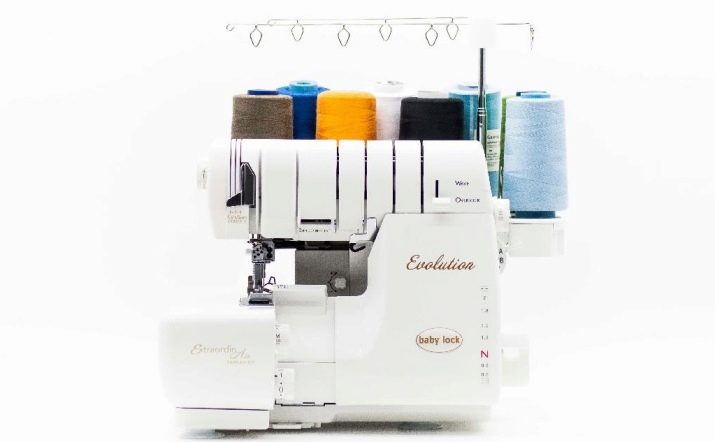
- Aurora 5000D. Quite a popular carpet block, presented in the middle price category. This is an electromechanical model capable of performing 14 operations at speeds up to 1500 sti / min. In the presence of a differential conveyor, regulators of stitch parameters, an automatic looper feeder. This is a good solution for beginner seamstresses.
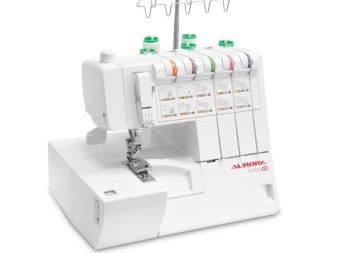
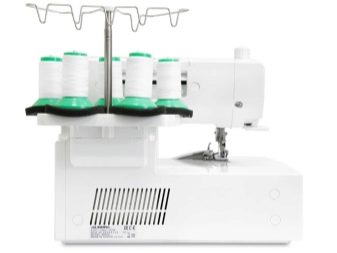
- Bernina Bernette Funlock B48. The model of the middle price category, equipped with a manual needle threader, can sew 2,3,4,5-thread stitches and flatlock. Supports 23 operations, there is a built-in backlight, the maximum sewing speed reaches 1300 sti / min. The assembly of the model is carried out in Taiwan, made quite high quality, this is a good option for beginners and experienced seamstresses.

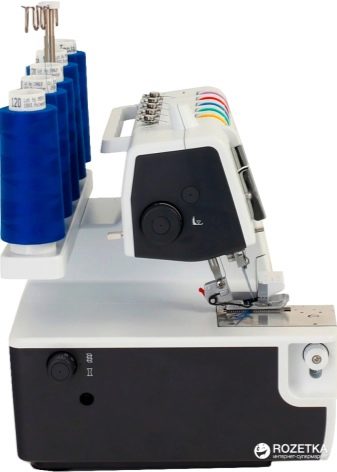
- Elna 845. Swiss made model with support for 20 different stitches. The set includes a built-in switch for a rolled seam, 2 knife systems - mobile and stationary, program selection with a handle, converter, removable foot, electronic foot switch. The coverlock develops a sewing speed of up to 1300 sti / min, allows you to adjust the stitch length in the range of 0.5-5 mm and the width up to 7 mm.
All these carpetlocks have already been tested by time, they are of high quality and reliable performance.
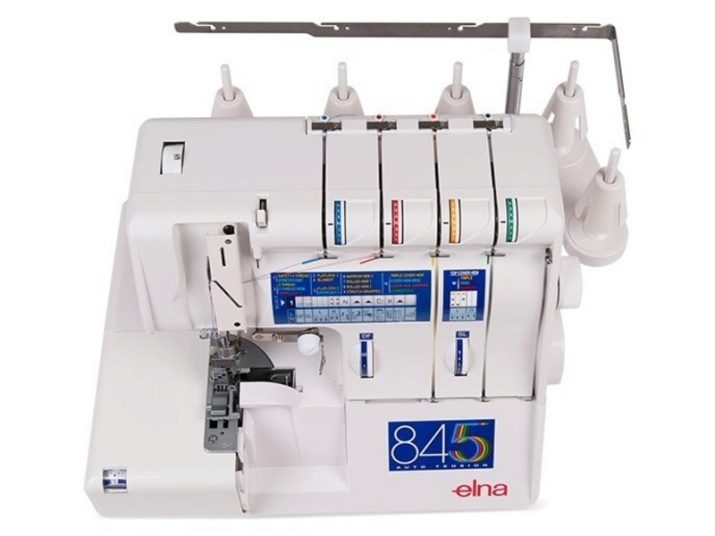
How to choose?
When choosing a rug for home use, you should pay attention to its functional equipment and the number of available operations. Several important parameters can be distinguished.
- Method for threading loopers. In the simplest carpet locks, this is done manually, it is important to make sure that all the necessary nodes are freely available. Automatic and semi-automatic threading of the loopers is much more convenient and allows you to avoid hours of training with tweezers in your hands. This is what this type of work looks like when performed manually.
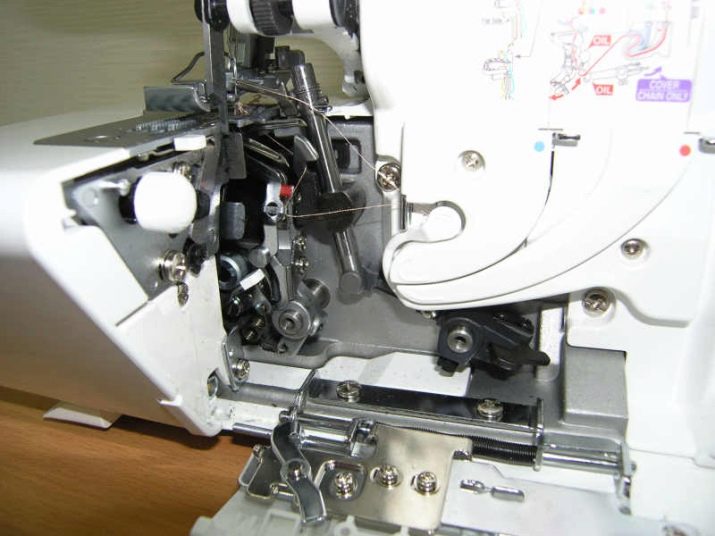
- Brand. Trustworthy companies include Merrylock, Singer, Pfaff, Janome, Brother, Babylock Evolution, Juki. Most of the well-known companies are based in Asia, from Japan to Singapore. But most of the models are licensed at the same factories in Taiwan.
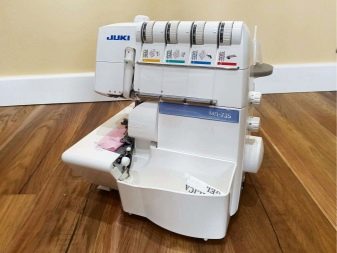
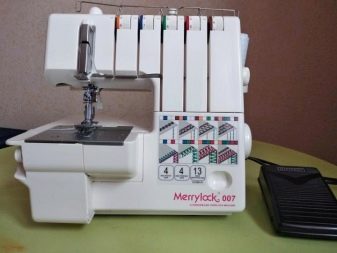
- Method for adjusting the thread tension. It can be carried out in automatic or manual mode. It is better for seamstresses who begin to work with carpet locks to choose the simplest option with auto-adjustment, which allows them to avoid sagging of the fabric. Experienced seamstresses can easily handle manual thread tension adjustments. The tensioners themselves should be located in one line, frontal placement is used only in the most budgetary models.
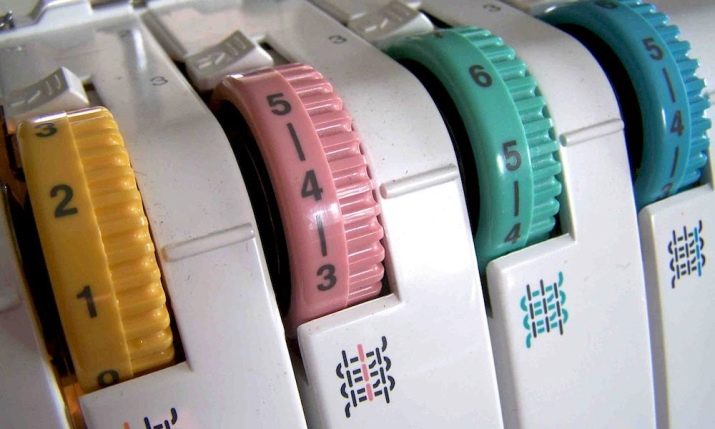
- The presence of a converter. It is needed to create 2-thread seams. It is installed on the upper looper of the carpetlock.
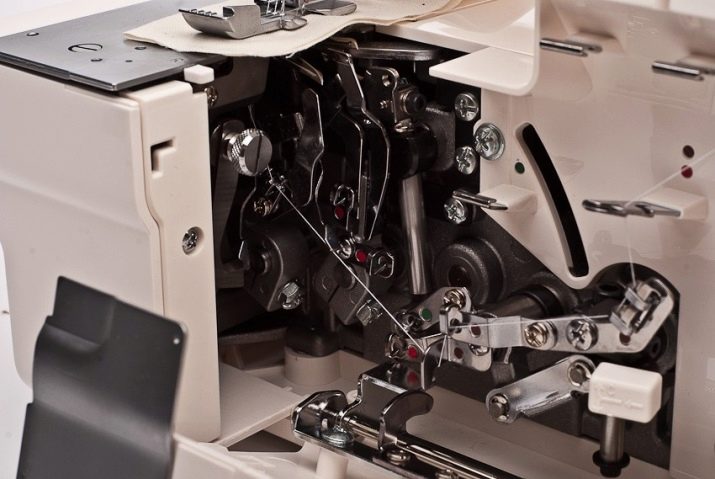
- The presence of a differential conveyor. It is needed for processing materials with low density or high tensile properties. The conveyor is comb-shaped, located in front of and behind the needles. By varying the modes, you can use it to create assemblies, ruffles, shuttlecocks on the fabric.

- Power. It affects the speed of work and the productivity of equipment. The maximum needle movement in the top models is up to 1500 sti / min. The price of a carpetlock also increases with increasing power.
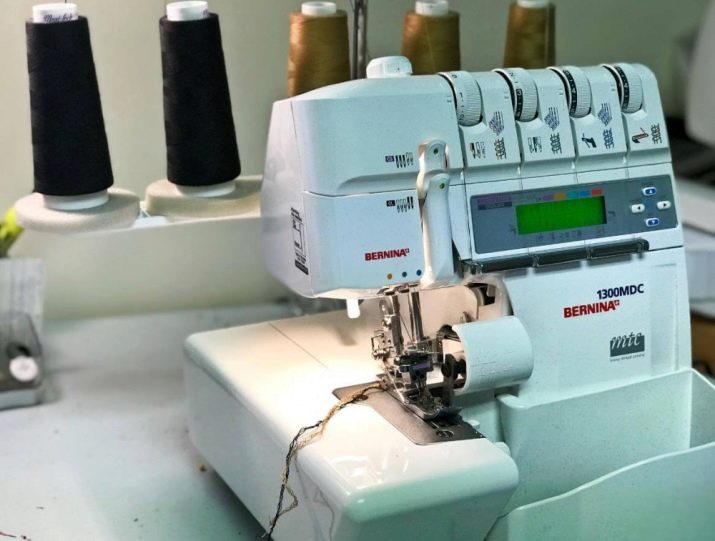
- Control method. Mechanical switches today are only found in inexpensive models that require constant monitoring by the seamstress. When it comes to more complex, productive equipment, it is better to choose programmable carpet locks with touch or button control and display. During operation, the screen displays all important data on the selected operating parameters.

- Equipment. The wider it is, the better.It is important to understand that large manufacturers usually include everything you need in the package, from feet, needle threaders, spare needles to cases and carrying cases.
Among other useful options in carpet locks, there may be an adjustment of the force with which the material is punctured, control over the pressure of the upper conveyor on the fabric, and a thread cutter. If you have to work with bulky products, you should immediately choose a technique with the function of transforming the desktop.
For beginner seamstresses, it is better to choose a carpetlock, where there is a color scheme for threading the threads on the body.
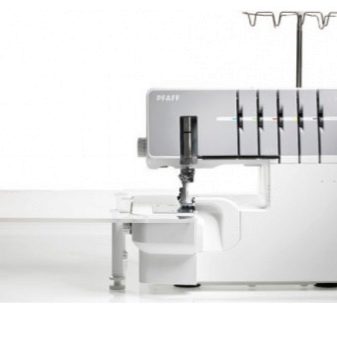
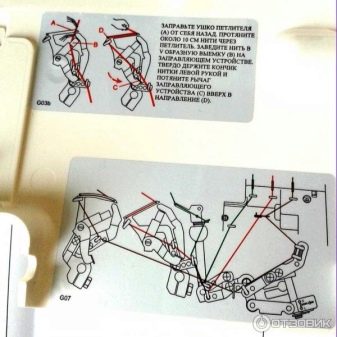
How to use?
Operation of the carpet lock requires sufficient experience and understanding of the sewing technique. If in a conventional overlock, almost all operations are performed on standard settings, here you have to adapt the settings for specific types of stitches. Before getting down to work, you will have to consider in detail all the features of the mechanism used, the location of the mode switches, otherwise you will not get a smooth and high-quality line. The more threads are involved in the work, the more often they have to be re-threaded in the loopers. 5-thread models are best chosen with automatic threading to avoid wasting time.
If the threads are set manually, you usually have to open the lid on a special compartment. In most models, when it is removed from the normal position, it will not be possible to turn on the machine - the blocking is activated.
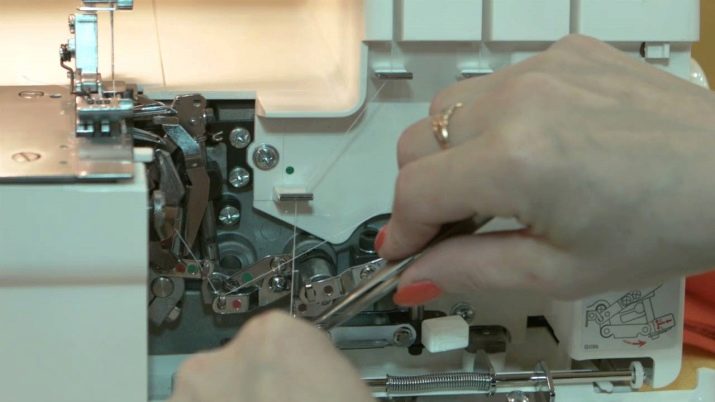
If it is planned to use bobbins of 5000 m or more in the carpet block, it is recommended to additionally use special accessories: cone mounts and shock absorbersthat slide over regular vertical pins. They will allow tangle-free winding of the threads. On small coils, use holders, excluding the movement of the bobbin during operation. They put on special threads on slippery threads. netspreventing unwinding too quickly.
Correct positioning of the needles is another important consideration. Depending on their number, the length shifts with an increase from left to right or in the opposite direction. It is better to clarify the data in the instruction manual for a specific model. Installation is carried out only with a screwdriver and a special tool. The needles should not be blunt or bent.
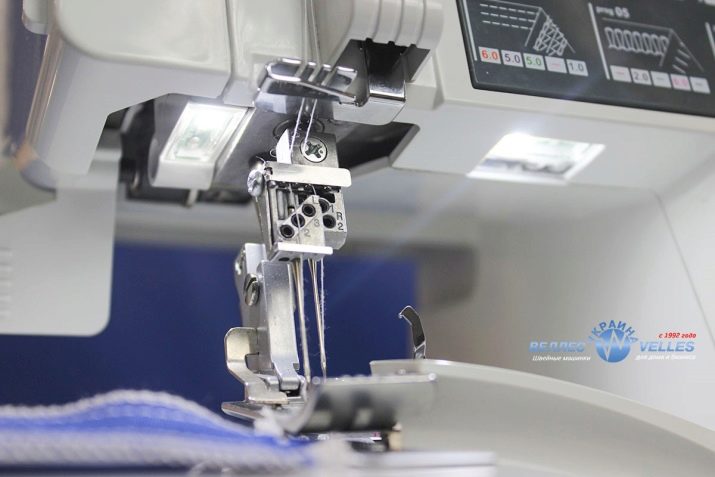
Review overview
Real reviews of carpet locks, which are most popular among professional seamstresses and needlewomen who prefer to do work at home, look pretty positive. Traditionally deserves the highest marks Janome technique, characterized by top covering, high productivity. Coverlocks significantly save space, reduce the amount of equipment in the home workshop, and make it possible not to change equipment when creating different types of seams.
No less popular are inexpensive models from Merrylock brand... Seamstresses note the quiet operation of this technique, its compactness and lightness. But at the same time, the brand's carpetlocks are not adapted to work with multilayer fabrics, materials of great thickness. However, this drawback is redeemed by comfortable work and the ability to change several bulky devices for one multifunctional machine.
The next video will tell you why you need a carpetlock.








